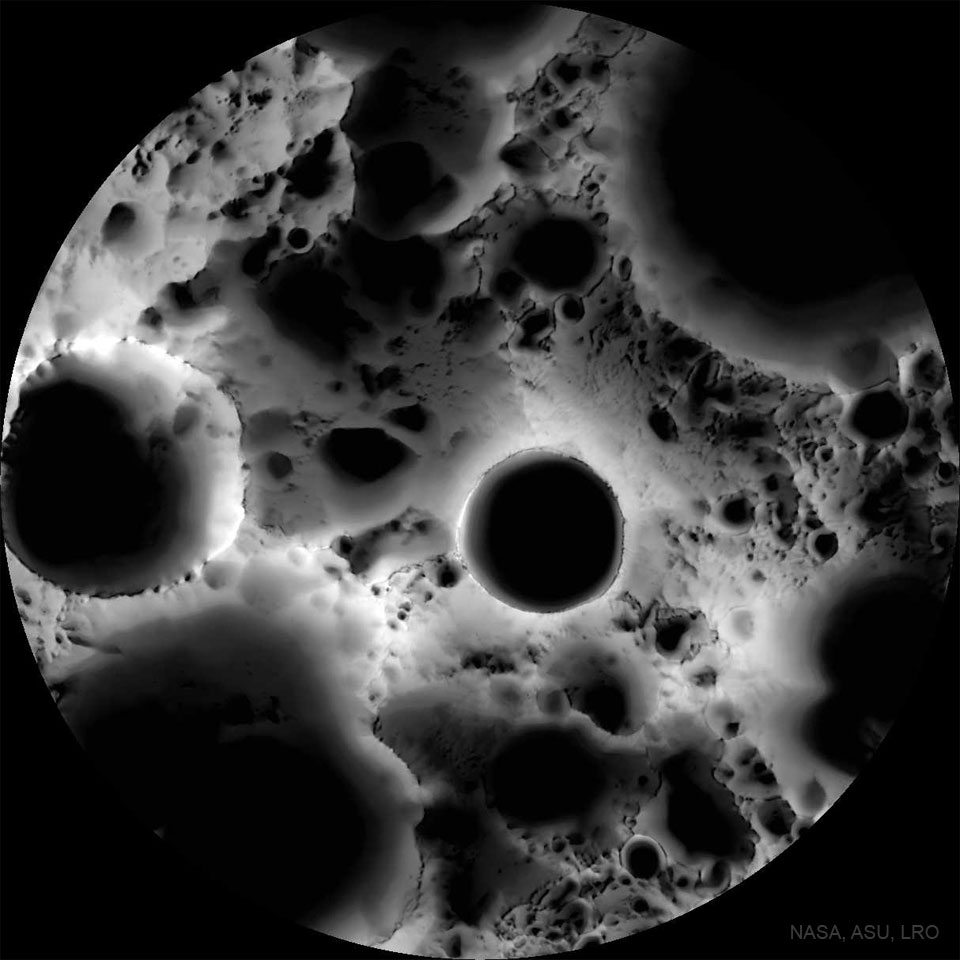2022年4月10日
Shadows at the Moon’s South Pole
Image Credit: NASA, Arizona State U., Lunar Reconnaissance Orbiter
Explanation: Was this image of the Moon’s surface taken with a microscope? No — it’s a multi-temporal illumination map made with a wide-angle camera. To create it, the Lunar Reconnaissance Orbiter spacecraft collected 1,700 images over a period of 6 lunar days (6 Earth months), repeatedly covering an area centered on the Moon’s south pole from different angles. The resulting images were stacked to produce the featured map — representing the percentage of time each spot on the surface was illuminated by the Sun. Remaining convincingly in shadow, the floor of the 19-kilometer diameter Shackleton crater is seen near the map’s center. The lunar south pole itself is at about 9 o’clock on the crater’s rim. Crater floors near the lunar south and north poles can remain in permanent shadow, while mountain tops can remain in nearly continuous sunlight. Useful for future outposts, the shadowed crater floors could offer reservoirs of water-ice, while the sunlit mountain tops offer good locations to collect solar power.
Tomorrow’s picture: ISS Sunspot
月球南极的阴影图
影像提供: NASA, Arizona State U., Lunar Reconnaissance Orbiter
说明: 这张月球表面影像是用显微镜拍摄的吗?当然不是,它是使用广角相机制作的多时间光照图。为了制作这种图,月球探勘号测轨道船在6个月球日(6个地球月)期间,收集了1,700 张照片,从不同角度反复拍摄这片以月球南极为中心的区域。所获得的照片经过叠合制成这幅主题图像,以呈现该区表面上每个点受到太阳照射的时间之百分比。在此图里,可以看到中心附近19公里直径的沙克尔顿坑的坑底,永远停留在阴影里。月球南极本身,则位于这个撞击坑边缘约9点钟的位置。在月球南极和北极附近的撞击坑之坑底,永远留在阴影里,而山顶几乎不断受到阳光的照耀。这些特点对将来建制月球前哨站很有用,因为阴影里的撞击坑会是水冰的储存库,而阳光普照的山顶则是收集太阳能的好地点。
明日的图片: ISS Sunspot







